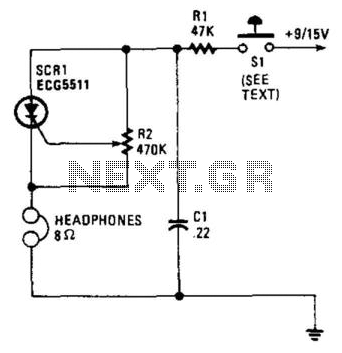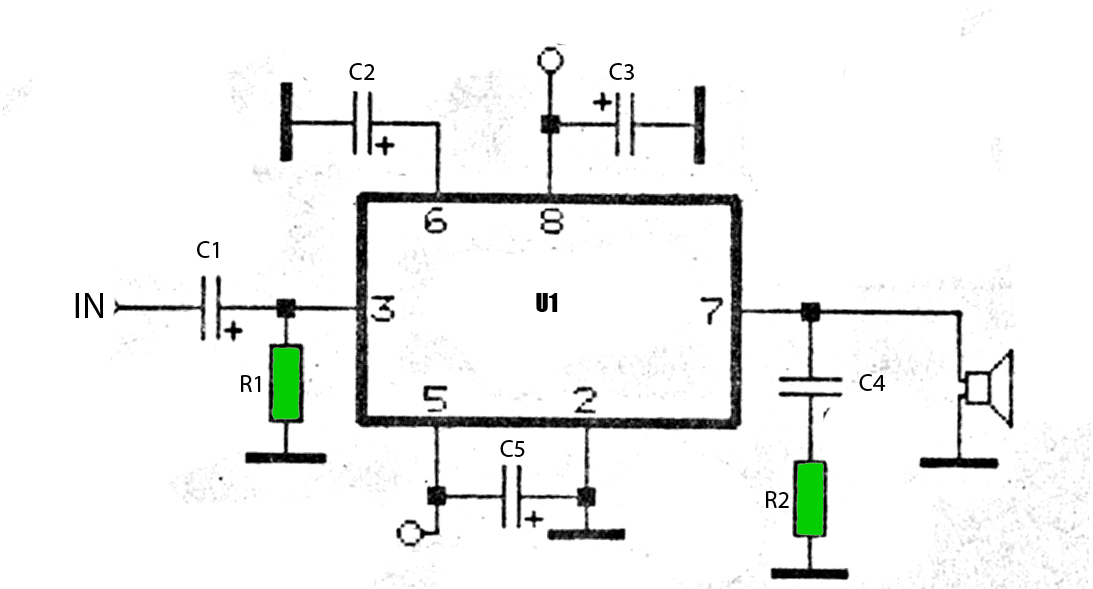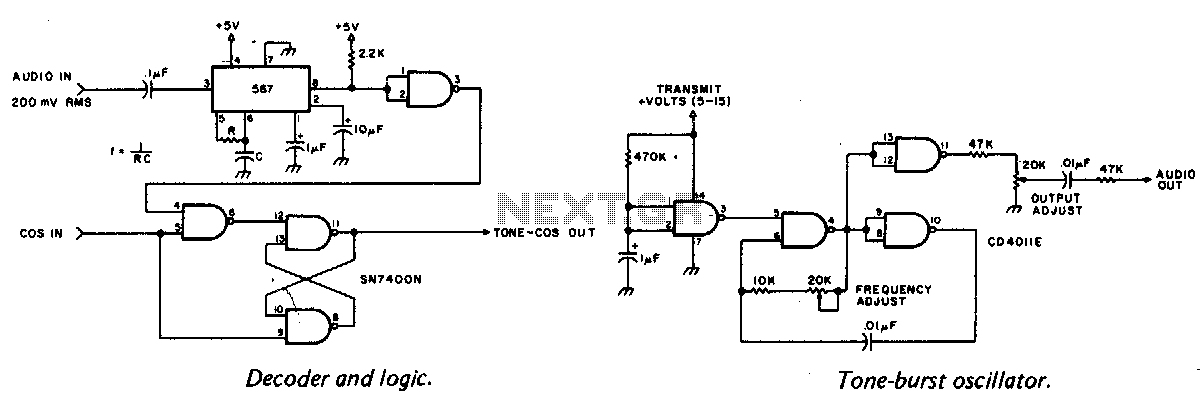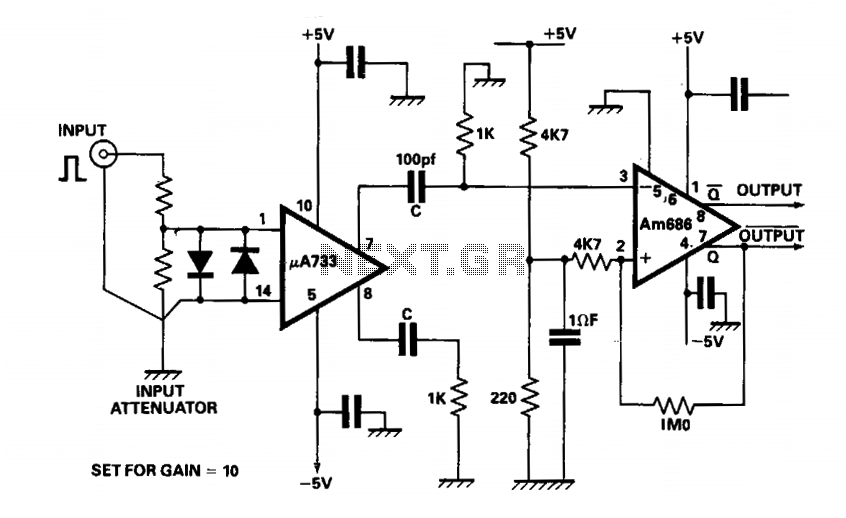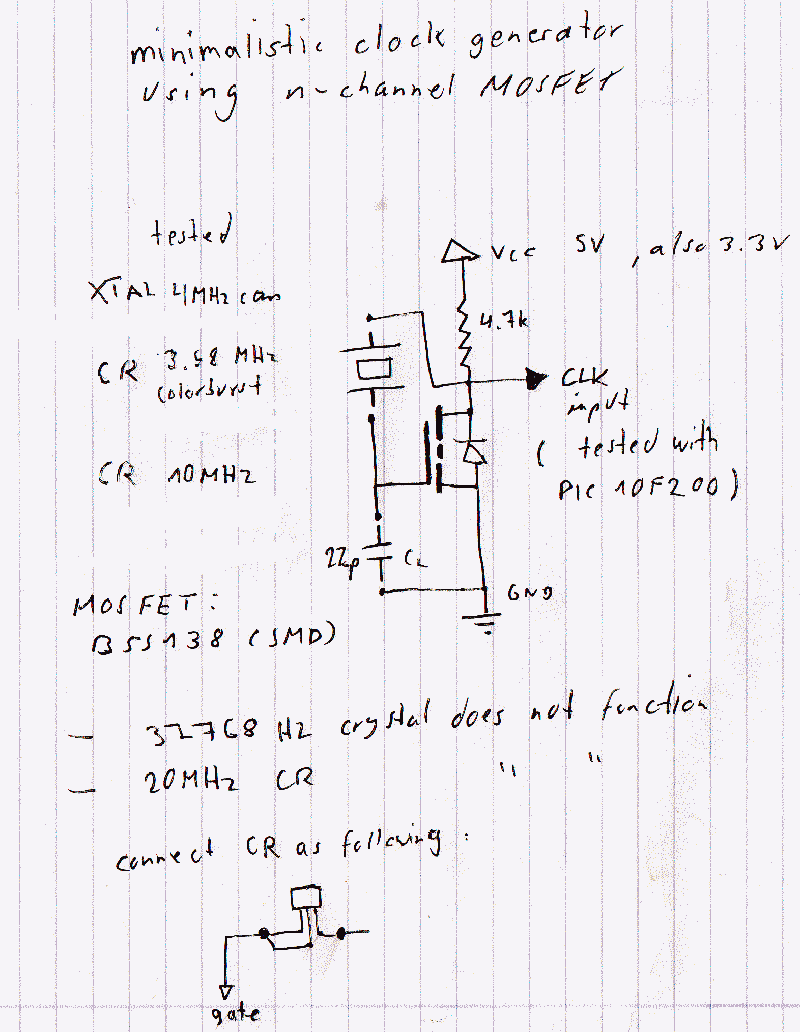
Ne602 Rf Oscillator circuits
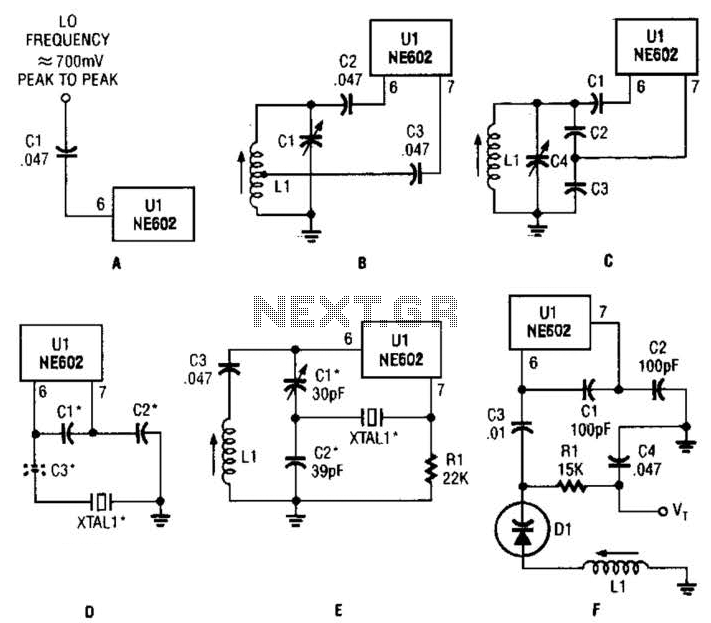
Any standard oscillator, such as a Colpitts or Hartley configuration, can be utilized to generate the local oscillator (LO) frequency required by the NE602.
The NE602 is a versatile integrated circuit commonly used in radio frequency applications, particularly in mixer and oscillator configurations. It requires a local oscillator frequency to facilitate the mixing process, which is essential for frequency conversion in communication systems.
Colpitts and Hartley oscillators are two popular configurations that can effectively produce the necessary LO frequency. The Colpitts oscillator employs a combination of capacitors and an inductor to determine its resonant frequency, utilizing the feedback from a voltage divider formed by the capacitors. This configuration is known for its stability and ease of tuning, making it suitable for generating precise frequencies.
On the other hand, the Hartley oscillator uses a tapped inductor along with capacitors to set its oscillation frequency. This design allows for a broader frequency range and can be advantageous in applications where frequency adjustment is necessary. Both oscillator types can be designed to operate within the frequency ranges compatible with the NE602, ensuring optimal performance in various RF applications.
In practical applications, careful consideration should be given to the component values and layout to minimize noise and ensure stability. Additionally, the output of the oscillator should be appropriately buffered to match the input requirements of the NE602, facilitating efficient signal processing and minimizing signal degradation. Just about any standard oscillator (such as a Colpitts or Hartley configuration) can be used to generate the LO (local oscillator) frequency needed by the NE602.
The NE602 is a versatile integrated circuit commonly used in radio frequency applications, particularly in mixer and oscillator configurations. It requires a local oscillator frequency to facilitate the mixing process, which is essential for frequency conversion in communication systems.
Colpitts and Hartley oscillators are two popular configurations that can effectively produce the necessary LO frequency. The Colpitts oscillator employs a combination of capacitors and an inductor to determine its resonant frequency, utilizing the feedback from a voltage divider formed by the capacitors. This configuration is known for its stability and ease of tuning, making it suitable for generating precise frequencies.
On the other hand, the Hartley oscillator uses a tapped inductor along with capacitors to set its oscillation frequency. This design allows for a broader frequency range and can be advantageous in applications where frequency adjustment is necessary. Both oscillator types can be designed to operate within the frequency ranges compatible with the NE602, ensuring optimal performance in various RF applications.
In practical applications, careful consideration should be given to the component values and layout to minimize noise and ensure stability. Additionally, the output of the oscillator should be appropriately buffered to match the input requirements of the NE602, facilitating efficient signal processing and minimizing signal degradation. Just about any standard oscillator (such as a Colpitts or Hartley configuration) can be used to generate the LO (local oscillator) frequency needed by the NE602.
